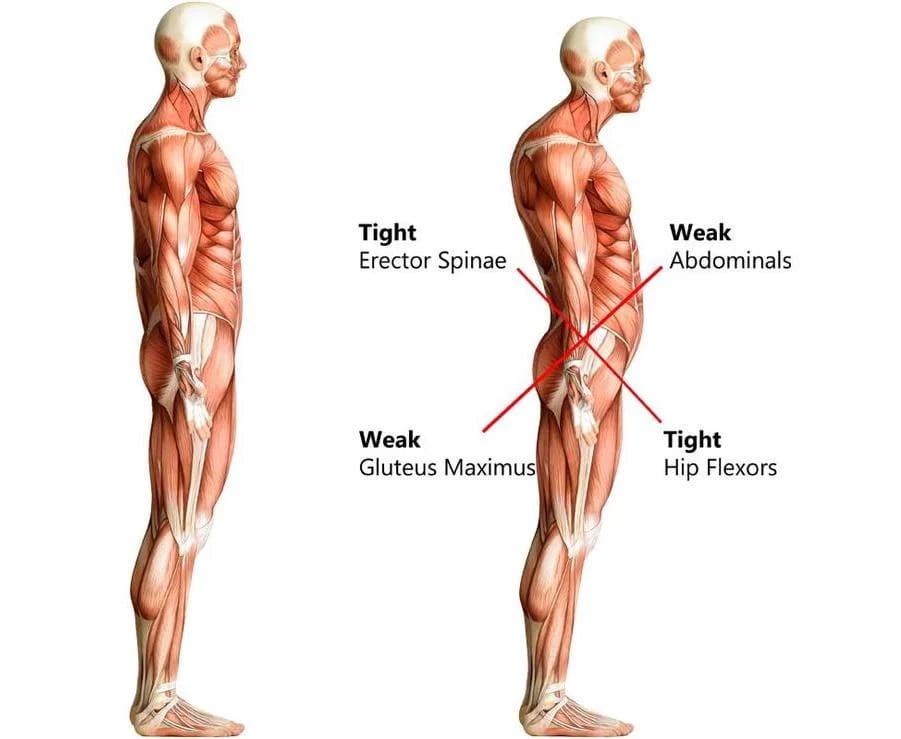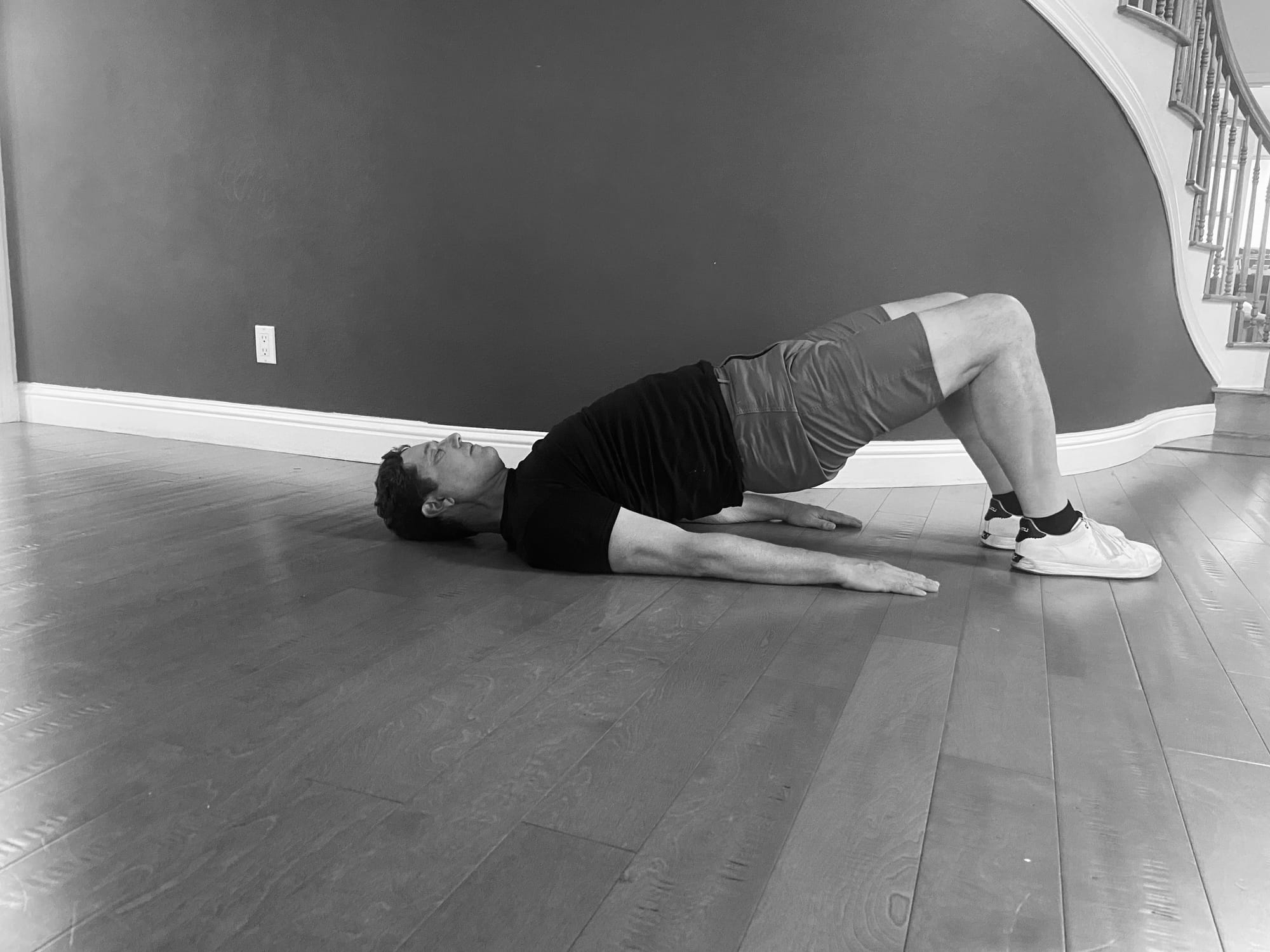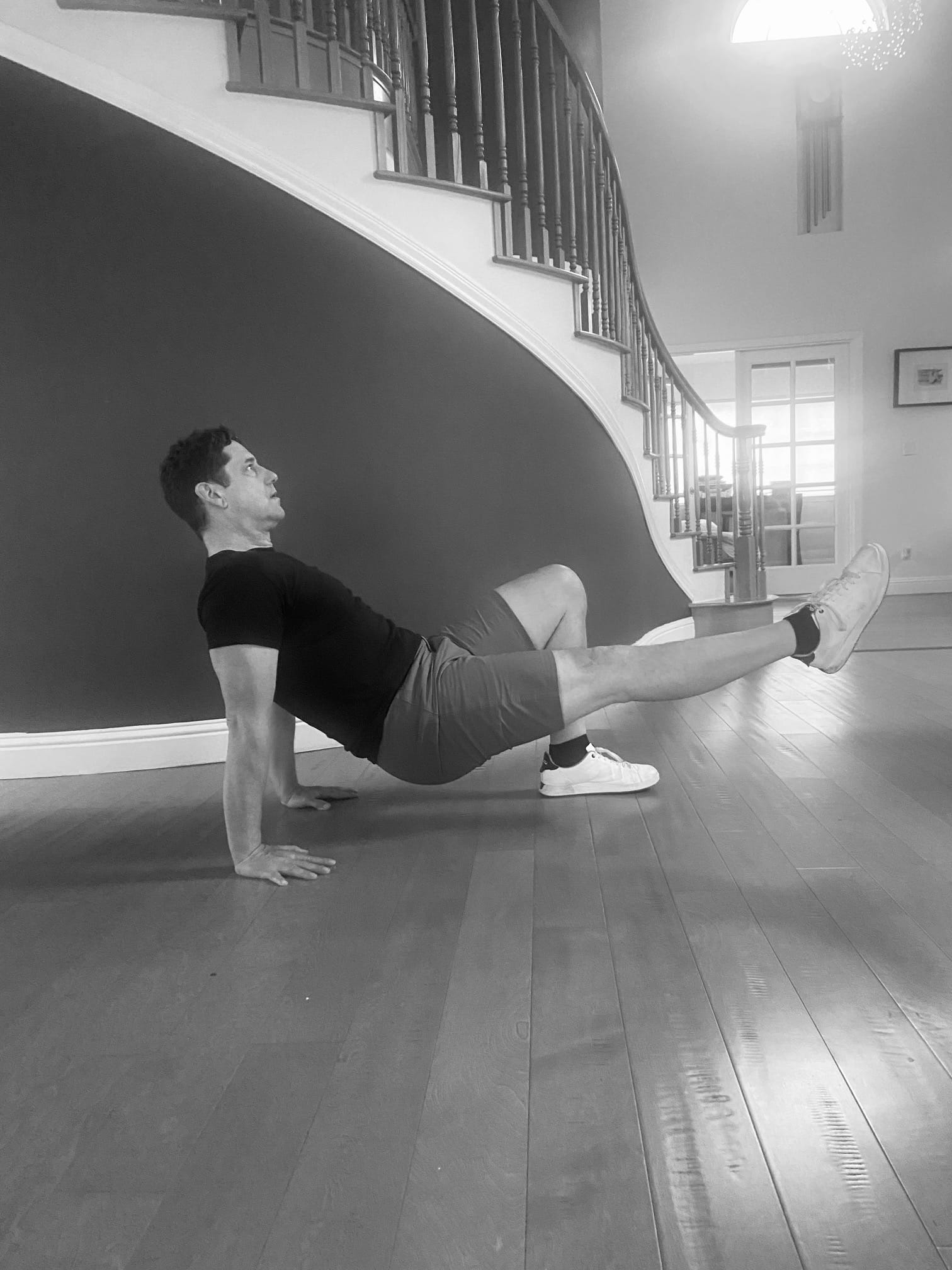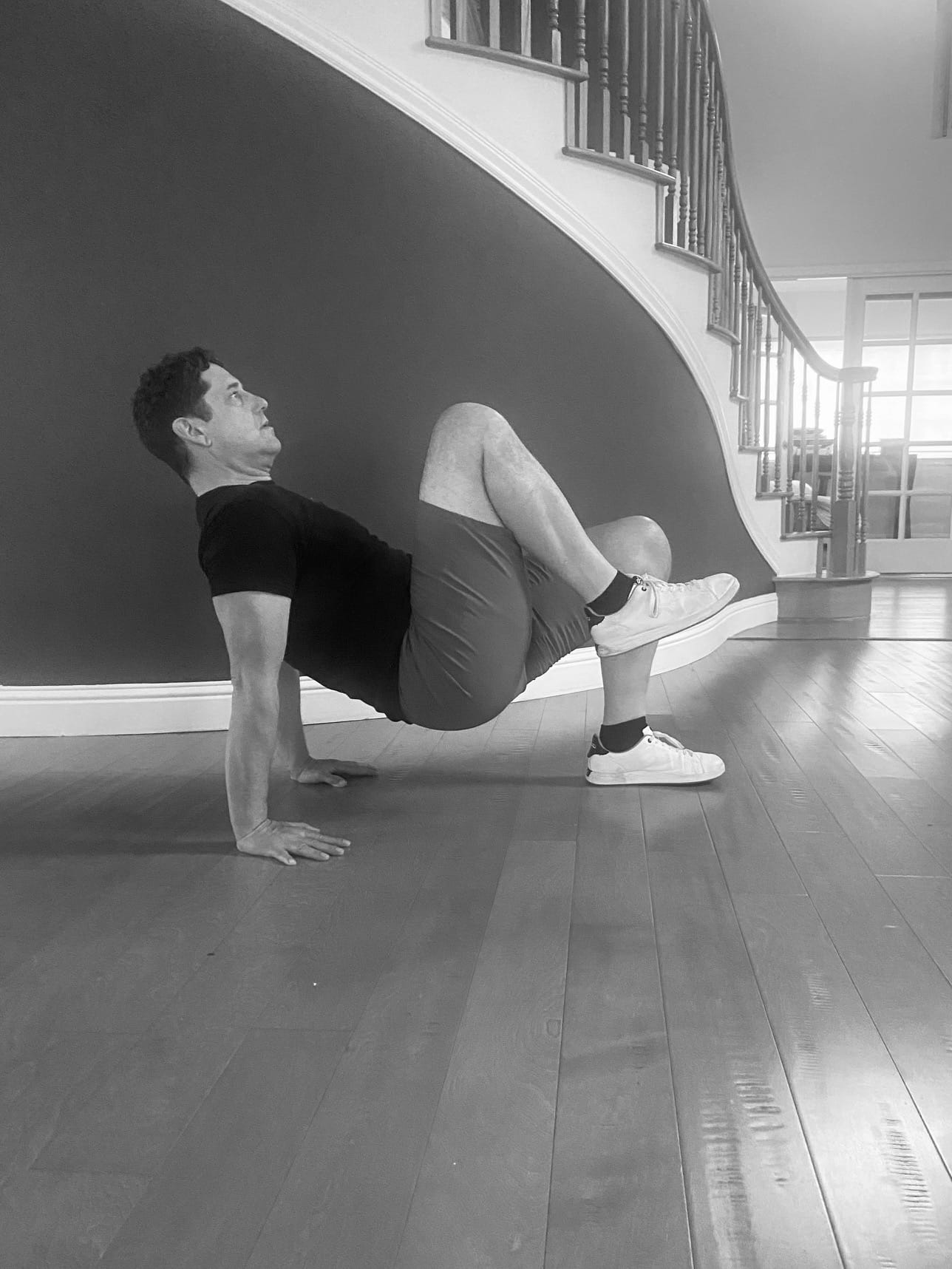What is "Lower Crossed Syndrome?" And how can you fix it?

In order to explain the lack of fitness in modern society, we have fetishized our primordial ancestors. They were everything we aspire to be: strong, lean, and fleet of foot. They also had a pristine diet, and wore loin cloths which were handmade in small batches. Of course, all of this is completely speculative, since the most detailed portrayal we have of a Paleolithic hominid is Brendan Fraser in “Encino Man.”
That’s not to say the modern office environment doesn’t wreak havoc on our health. Extended sitting is one of the biggest impediments to fitness. One of the most detrimental effects of office work is called “Lower Crossed Syndrome.”
Lower crossed syndrome occurs due to a strength imbalance in the abs, lower back complex, hips, and hamstrings. What this usually entails is that the posterior muscles are tightened and shortened (upper and lower back, glutes, hamstrings, and calves) while other muscles groups (such as the abs and glutes) are "turned off" or weakened.
Visually, (as evidenced in the photo above) this can result in a forward tilting pelvis and abdomen, curved spine, and a protruding butt. The biggest reason people ignore their posterior chain is simple: they can't see their posterior muscles in a mirror. So the focus is on the anterior muscles such as the pecs, biceps, and superficial ab muscles.
Below are some exercises that target the glutes, abs, and hamstrings — muscles that, as previously mentioned, are weakened significantly by extended sitting.
Exercise disclaimer: please be cautious when performing these exercises. If you have any pre-existing injuries, please consult a licensed professional before attempting. Be careful operating under the "no pain ... no gain" mantra. The people that carelessly follow that mantra often end up with too much of the former and not enough of the latter.
Beginner Exercises:
The Bridge

(Photo credits: Emmanuelle and Shai Brandt. AKA my daughters)
This is the foundational exercise of the posterior chain. What "planks" are to the abdomen complex, "bridges" are to the hamstrings and glutes. And yes...when done correctly, the ab complex is also involved. In fact, when I guide clients through exercises, my constant refrain is "focus on the ass and abs."
For this exercise, lie flat on the ground, and bend your knees at 90 degrees, with your feet on the ground. Firmly plant your feet. Try to keep your knees aligned and slightly squeeze them. This also gets the adductors (the muscle group inside your thighs) involved. Next, lift your butt off the ground and hold, while tightening your abs. You will immediately feel your hamstrings and glutes activate. Make sure not to let your butt drop and avoid arching your back too much.
Aim for twenty seconds, and then increase by increments of twenty seconds. One minute holds 2-3x per day is a great goal.

The Bird Dog
The "Bird Dog" (named after the stance hunting dogs use to point out birds) is another great foundational exercise. It targets the lower back, abs, glutes, and hamstrings. Begin with both hands and knees on the ground. Now raise your opposite leg and opposite arm out. Try to remain level. (This is admittedly hard to do without a mirror) As with the bridge, it's important to contract your ass and abs.
Try for thirty seconds on each side , and work your way up to one minute. As with the bridge, 2-3x daily is great.
Intermediate-Advanced exercise.
The next exercise is progressive, and shouldn't be undertaken by anyone without a solid training background.



The "Can-Can Kick."
This is a great full-body movement. It targets the glutes and hamstrings, the quads (the front leg muscles), the abs and the arms muscles; including the triceps, biceps, and deltoids (shoulder muscle complex.)
The starting point is in a seated position with your ams behind you and knees bent (as above.) Raise your butt off the ground with one leg extended. Make sure to keep your knee straight. You will feel it in your stabilizing leg in your glutes and hamstrings, and in your quads with the leg that's extended. Now, with the leg in the air, bring your knee into your chest. This will force you to recruit your abs. Bring your leg out again and lower yourself to the ground.
Try for a set of 20 on each leg. Once you're proficient, aim for 30 or 40 on each side 1X per day. It's an exercise that can really yield big benefits!
Joshua Brandt is a Bay-Area based personal trainer.
Questions? Drop me a line at 415.412.7339. Initial sessions are always free!
Member discussion